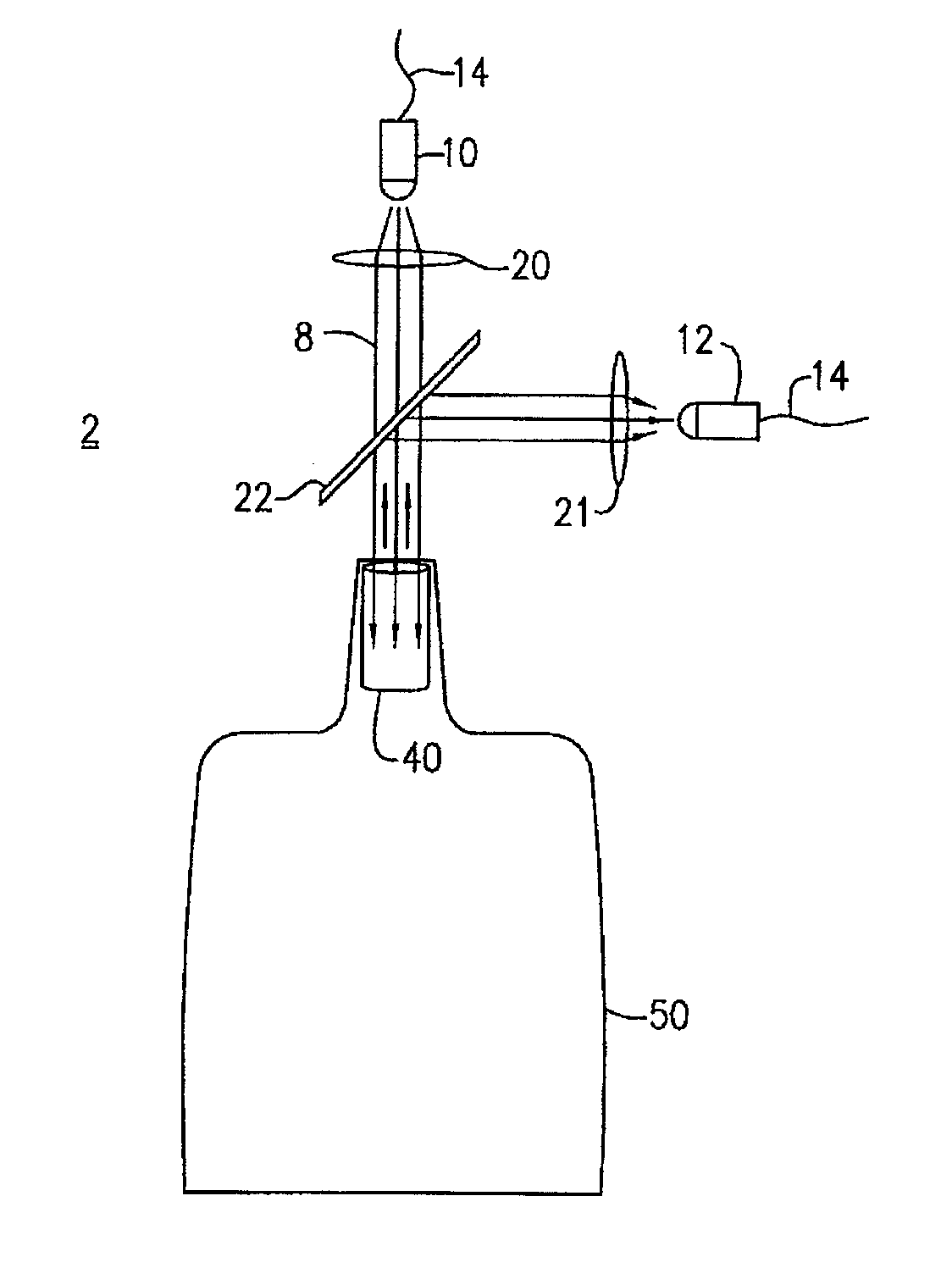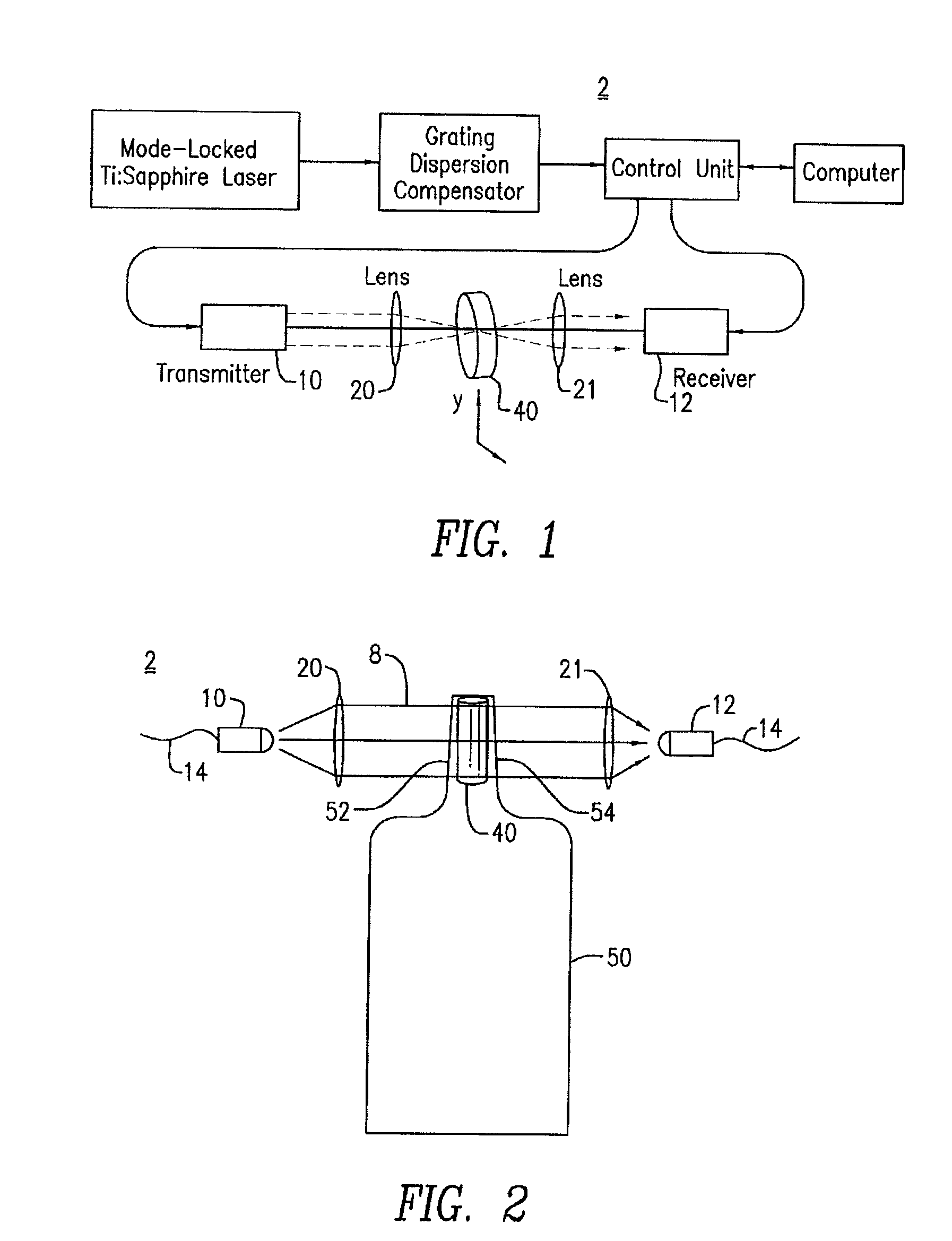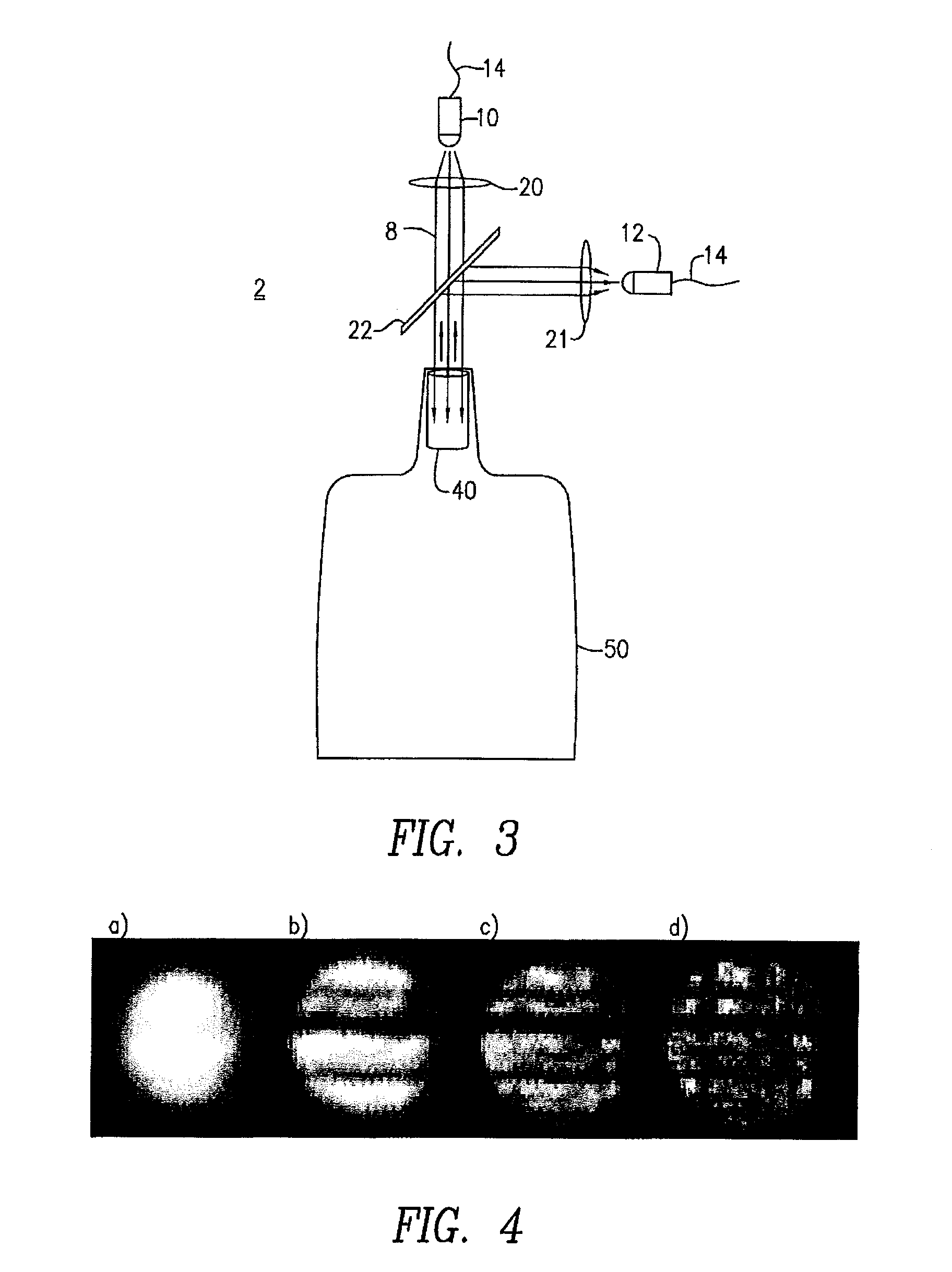Methods and apparatus for the non-destructive measurement of diffusion in non-uniform substrates
a non-uniform substrate, non-destructive technology, applied in the direction of optical radiation measurement, instruments, material analysis, etc., can solve the problems of inherently invasive detection methods, cork taint, and increase diffusion, and achieve high thz transmission
- Summary
- Abstract
- Description
- Claims
- Application Information
AI Technical Summary
Benefits of technology
Problems solved by technology
Method used
Image
Examples
examples and experiments
[0062]In one example, the THz transmission of cork sample was measured employing apparatus as depicted in FIG. 1. A mode-locked Ti:sapphire laser was used to generate and detect pulses of THz radiation in micro-fabricated antenna structures. The pulse of Terahertz radiation was roughly a few picoseconds in duration and contains spectral components from about 0.1-2.5 THz. The THz radiation was focused to a ˜1 mm spot size using lenses. The sample was placed at the focus of the radiation and mechanically scanned using computer controlled translation stages. After passing through the sample, the radiation was focused onto a THz detector. The image was acquired one pixel at a time; at each pixel, the spectrum of THz radiation was recorded.
[0063]Now referring to FIG. 4, THz images were generated by measuring the THz power transmitted in a specific THz bandwidth. FIG. 4 depicts THz transmission images of the cork sample depicted in FIG. 5A for THz bandwidths as follows: FIG. 4a: 0.1-0.3 T...
PUM
 Login to View More
Login to View More Abstract
Description
Claims
Application Information
 Login to View More
Login to View More - R&D
- Intellectual Property
- Life Sciences
- Materials
- Tech Scout
- Unparalleled Data Quality
- Higher Quality Content
- 60% Fewer Hallucinations
Browse by: Latest US Patents, China's latest patents, Technical Efficacy Thesaurus, Application Domain, Technology Topic, Popular Technical Reports.
© 2025 PatSnap. All rights reserved.Legal|Privacy policy|Modern Slavery Act Transparency Statement|Sitemap|About US| Contact US: help@patsnap.com



